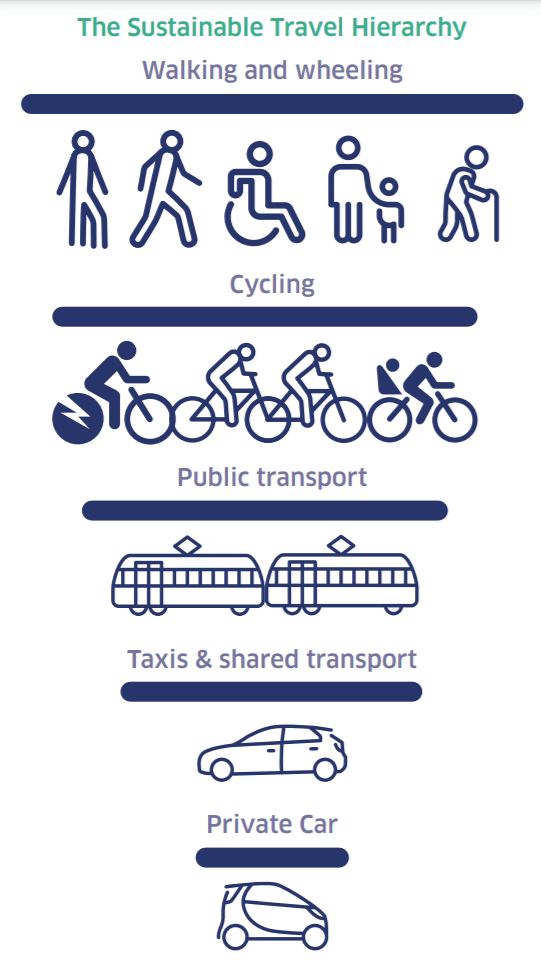Low Carbon Transport
How do we reliably transport people and goods without emissions?
The Challenge
Transport is responsible for over 30% of the greenhouse gas emissions in Scotland. The largest contributor to transport emissions is the road sector. The way we get around needs to change.
Technology, for example electric vehicles, is making this transition look more likely. But change is happening too slowly.
Transport of people and goods is heavily reliant on infrastructure, roads and rail, that takes years to plan and build. Infrastructure we build now needs to be planned with a changing climate in mind.
Read more about where Scotland’s greenhouse gas emissions come from in our blog
Changing travel and transport
The Scottish Government and Local Authorities across Scotland want to make active travel – walking and cycling – easier and more pleasant. In transport planning priority should be given to walking, wheeling and cycling as per The Sustainable Travel Hierarchy which is set out in Securing a green recovery on a path to net zero: climate change plan 2018–2032 – update :

Getting people out of their cars would have great benefits for emissions, congestion and air quality, and it would be good for our health. The Climate Change Plan update sets a target to reduce the distance we travel by car by 20% by 2030.
Electric vehicles play a critical role in reducing Scotland’s transport emissions, and the Scottish Government is committed to phasing out petrol and diesel cars by 2030. This means we need to replace the cars we currently drive and install new charging infrastructure.
Scottish cities, Glasgow being the first, are also preparing to introduce Low Emission Zones where only the cleanest vehicles will have access.
Read the Climate Change Plan update
Transport infrastructure
Transport infrastructure is critical to our everyday lives; to how our economy and communities work.
Taking a place based approach across planning, infrastructure and the local economy is important to reduce emissions and achieve the benefits of healthier lifestyles. This includes looking at how to create thriving local communities where people don’t need a car for daily work or shopping.
The Scottish Government is committed to complete decarbonisation of passenger rail vehicles by 2035.
Roads and railway lines in Scotland will come under increasing threat from flooding, landslides and extreme weather as the climate changes. This can mean increased maintenance costs and more disruption.
The Queensferry Crossing, opened in 2017, is an example of infrastructure with climate change adaption built in: The bridge design includes designated signs to inform drivers of high wind speeds, and new materials and innovative features should keep the bridge open in high winds.
Visit Transport Scotland’s climate change page
Read about the Infrastructure Commission for Scotland
Read more abour adaptation features on the Queensferry Crossing
Our Response
Changing travel and transport
Our work to help the Scottish Government reach their emission targets for transport spans analysis to inform policy on electric vehicles, better understand travel behaviours and explore changes in business travel.
Featured Projects
Climate impacts on infrastructure
We support assessments of the climate impact on transport and other infrastructure projects, looking at how infrastructure decisions can help or hinder reducing emissions.
Featured Projects